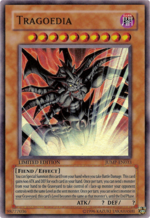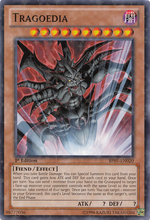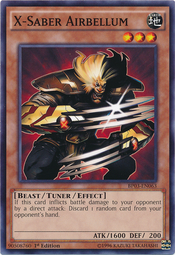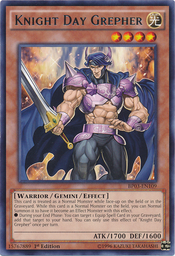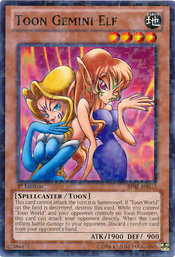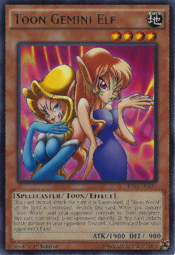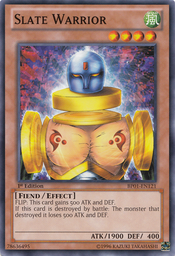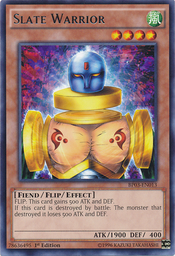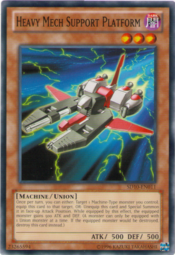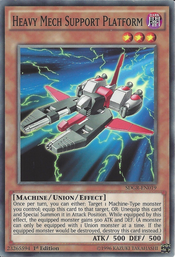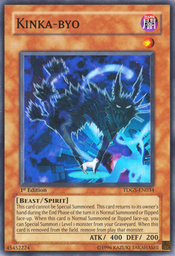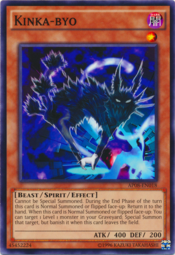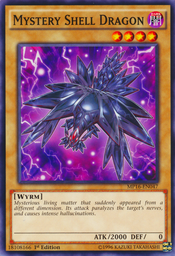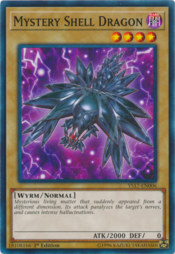Problem-Solving Card Text
Problem-Solving Card Text (often abbreviated PSCT) is a method of writing card text used for prints released from July 8, 2011 onward. The purpose of Problem-Solving Card Text is to specify card effects to the point that most situations can be resolved by logically interpreting the card text.[1]
It was announced by Kevin Tewart through a series of blog posts to Konami's Yu-Gi-Oh! 5D's TCG Strategy Site.[1][2] It was introduced to Booster Packs with the release of Generation Force[3] and Starter Decks with the release of Starter Deck: Dawn of the Xyz. Reissues of older products, such as Duelist Pack: Kaiba from the Silver Dragon Value Box, often use Problem-Solving Card Text.
Legendary Collection 2: The Duel Academy Years Mega Pack was in part created to reprint many old cards with the new text style (including the "HERO" monsters).[4]
Contents
Interpretation[edit]
Problem-Solving Card Text uses specific words with very particular meanings in the context of gameplay. How to interpret the text is important to understanding how to apply card text to the game.
This interpretation can only be applied for cards that use Problem-Solving Card Text. Cards that were printed with earlier text may use some of the same terms or structures, but this does not necessarily mean that they work as if they were Problem-Solving Card Text.
Text structure[edit]
- All card effects that make a Chain Link include a colon " : " or a semicolon " ; " somewhere in their text (possibly both). If a card effect does not use either, it does not make a Chain Link.[5]
- Text before the colon " : " describes activation conditions (limits on when or how often a card or effect can be activated).[5][6] These conditions only need to be met when the card is activated.[7]
- Conditions other than target requirements that have to be met during both activation and resolution are specifically noted in a separate sentence after the effect sentence (e.g. "Zombie Master", "Treeborn Frog").[7]
- Text before the semicolon " ; " (but after the colon, if any) describes anything that happens when that card or effect is activated (such as costs and targeting).[5][6]
- Built-In Special Summons (other than Synchro, Xyz, Pendulum, or Link) are denoted by parentheses " () " stating the location from which the monster can be Special Summoned.[8]
- Cards with bulleted effects (●) that resolve in the same Chain Link specify whether they resolve simultaneously or sequentially (if sequentially, effects are applied in the order they are listed). In these cases, each effect activated resolves independent of the success of the other(s).
- The text "in sequence" indicates that the bulleted effects are applied sequentially (e.g. "Gravekeeper's Oracle", "Advance Zone").
- The text "(simultaneously)" indicates that the bulleted effects are applied simultaneously (e.g. "Ryko, Lightsworn Hunter", "Kunai with Chain").
- If neither is specified, the effects each make separate Chain Links (e.g. "Metaphys Horus").
Terminology and phrasing[edit]
- The terms "that target" or "those targets" and "it" or "they/them" have specific meanings in the resolution of the effect.[7]
- "That target" and "those targets" indicate that targets must still meet the target requirements at resolution to be affected. "Both (those) targets" and "all three targets" indicate that all targets must still meet the target requirements at resolution for any of them to be affected.
- "It" and "they/them" indicate that the targets do not need to meet the target requirements at resolution, only when targeted.
- Cards that state "You can only activate this card once per turn/Duel" can be activated again in the same turn/Duel if their activation is negated.
- For example: "Silver's Cry" (which can only be activated once per turn) and "The Seal of Orichalcos" (which can only be activated once per Duel) can be activated again during the same turn or Duel if another copy had its activation negated (such as by "Magic Jammer"), but not if only its effect was negated (such as by "Number 38: Hope Harbinger Dragon Titanic Galaxy").
- Effects that state "You can only use this effect once per turn/Duel" cannot be activated again in the same turn/Duel, even if their activation is negated.[9]
- For example: "Souleating Oviraptor" can only use each of its effects once per turn, while "Dotscaper" can only use each of its effects once per Duel, even if these monsters' effects are negated by a card such as "Solemn Strike".
- For prints released from July 2017 onward, Quick Effects of Monster Cards specifically say "Quick Effect" in their text before the colon.
- For prints released prior to July 2017, Quick Effects are marked by either the text "during either player's […]" in its activation conditions or the text "(this is a Quick Effect)" at the end of the effect text. (Despite being printed before July 2017, Maximum Crisis: Special Edition uses "(Quick Effect)" to mark them.)
- If an effect that Summon states "Immediately after this effect resolves", the Summon of that monster(s) can be negated if the effect resolves as Chain Link 1 (e.g. "Ultimate Offering", "Advanced Heraldry Art").
Conjunctives[edit]
| Resolved... | A or B required? | ||
|---|---|---|---|
| Neither | A | Both | |
| Sequentially | also, after that | then | |
| Simultaneously | also | and if you do | and |
The conjunctives "and", "and if you do", "also", and "then" have specific meanings:[10]
- In "Do A, then do B", B happens after A. These things happen in sequence, not simultaneously. A is required for B, but NOT vice-versa: if A does not happen, then stop; even if B cannot happen, you still do A.[10]
- In "Do A and B", both A and B happen simultaneously. BOTH A and B are required. If you cannot do both, you do nothing.[10]
- In "Do A, and if you do, do B", both A and B happen simultaneously. A is required for B, but NOT vice-versa: if A does not happen, then stop; even if B cannot happen, you still do A.[10]
- In "Do A, also do B", both A and B happen simultaneously. Neither is required for the other to occur.[10]
- In "Do A, also, after that, do B", B happens after A. These things happen in sequence, not simultaneously. Neither is required for the other to occur.[note 1]
For prints released prior to May 2012, while "and" does indicate simultaneity, it gives no indication of dependency. However, "then" indicates both sequentiality and dependency for all prints with Problem-Solving Card Text.[7]
There is no conjunctive that indicates both parts of the effect are required while also indicating that the parts are not simultaneous. While this relationship is rare, it does occur for some effects—in particular, Fusion Summoning and Ritual Summoning effects, which normally text structures unique to that Summoning method, which do not use conjunctives at all for that part of their text. The card "Luminous Dragon Ritual" uniquely indicates this relationship with the conjunctive "and" followed by "after that" at the end of the second part of the effect.
Changes[edit]
Terminology[edit]
- "Battle Damage" → "battle damage" (introduced in Abyss Rising)
- "remove from play" → "banish"[4]
- "removed from the field" → "leaves the field"[4]
- "pick up" (reveal cards from top of Deck) → "excavate" (introduced in War of the Giants: Round 2)[11][12]
- "select" → "target"[4]
- "Effect Monster's effect" → "monster effect"
- "When" (on mandatory effects only) → "If" (introduced in Realm of Light Structure Deck)
- "Life Points" → "LP" (introduced in Super Starter: Space-Time Showdown)
- "Union Monster" → "Union monster" (introduced in Duelist Pack: Kaiba - Silver Dragon Value Box)
- "Toon Monster" → "Toon monster" (introduced in Battle Pack 3: Monster League)
- "Flip Effect Monster" → "Flip monster" (introduced in Battle Pack 3: Monster League)
- "Fusion Material Monster" → "Fusion Material"
- "Synchro Material Monster" → "Synchro Material"
- "side of the field" → "field" (introduced in OTS Tournament Pack 1 and Premium Gold: Infinite Gold)
- "Tuner monster" → "Tuner" (introduced in The Dark Illusion)
- "Graveyard" → "GY" (introduced in Maximum Crisis: Special Edition)
- "Trap Card" (except when referring to the activation of a Trap Card) → "Trap" (introduced in Maximum Crisis: Special Edition)
- "Spell Card" (except when referring to the activation of a Spell Card) → "Spell" (introduced in Battles of Legend: Light's Revenge)
- "Material" (by itself) → "material" (introduced on the Weekly Shonen Jump July 2017 membership promotional card)
- "zone" (by itself) → "Zone" → "zone" (introduced in Starter Deck: Link Strike)
Phrasing[edit]
Additions[edit]
- "(except during the Damage Step)" (introduced in Order of Chaos)
- "and if you do" (introduced in Premium Collection Tin)
- "also, after that" (introduced in Premium Gold)
- "banishment" (introduced in Phantom Nightmare)
- "possession" (introduced in Return of the Duelist)
- "(min. […])"
- "(this is a Quick Effect)" → "(Quick Effect)" (changed in Battles of Legend: Light's Revenge)
- "Cannot be […] Summoned unless"
- "immediately after this effect resolves" (introduced in Abyss Rising)
- "(This card is always treated as a/an […] card.)" (introduced in Battle Pack 2: War of the Giants)
- "(This card is not treated as a/an […] card.)" (introduced on the Yu-Gi-Oh! Trading Card Game - Card Database with the release of Destiny Soldiers)
- "(if it was there when […])" and "(even if not)" (introduced in Structure Deck: Wave of Light)
Removals[edit]
- "(Damage calculation is applied normally)"
- "(without damage calculation)"
- "(This Special Summon is treated as a Fusion Summon.)" (starting in Cyber Dragon Revolution Structure Deck)[11]
- "-Type" (starting in Maximum Crisis: Special Edition).
- "(You do not use "Polymerization".)" (starting in The Lost Art Promotion 2021)
- "(in which case you do not use "Polymerization")" (starting in Legendary Duelists: Rage of Ra)
Modifications[edit]
- "return […] to the top of […] Deck" → "place […] on the top of […] Deck" (introduced in War of the Giants: Round 2)
- "during battle between this attacking card and a Defense Position monster […], inflict the difference as Battle Damage to your opponent" → "if this card attacks a Defense Position monster, inflict piercing battle damage to your opponent"[4]
- "selected as an attack target" → "targeted for an attack"[4]
- "attack once again"/"attack twice" → "make a second attack"
- "make 3 attacks" → "make a second and third attack" → "make 3 attacks" (changed in Yu-Gi-Oh! The Dark Side of Dimensions Movie Pack, and reverted in King's Court.)
- "still treated as a Trap Card" → "also still a Trap Card" → "also still a Trap" (changed in Legendary Dragon Decks)
- "Flip Effects are not activated at this time" → "(Flip Effects are not activated at this time)" → "(Flip Effects are not activated)" → "(Flip monsters' effects are not activated)" → "(Flip monsters' effects are not activated at this time)" (changed in Battle Pack: Epic Dawn, then again in Battle Pack 3: Monster League, then again in Astral Pack Six)
- "This card's name is treated as […] while […]" → "While this card is […], its name is treated as […]" → "This card's name becomes […] while […]" (changed in Legendary Collection 2: The Duel Academy Years Mega Pack)
- "This card's name is treated as […]." → "(This card's name is always treated as […].)" (introduced in Legendary Collection 4: Joey's World Mega Pack)
- "This card's name is also treated as […]." → "(This card is also always treated as […].)" (introduced in Dragons of Legend)
- "This card cannot be Normal Summoned or Set." → "Cannot be Normal Summoned or Set." → "Cannot be Normal Summoned/Set." (introduced in Generation Force, then changed in Legendary Collection 3: Yugi's World)[8]
- "This card can only be […]" → "Must first be […]"[8]
- "This card cannot be Special Summoned except […]" → "Must be Special Summoned […] and cannot be Special Summoned by other ways."[8] → "Must be Special Summoned […]" (changed in Battles of Legend: Light's Revenge)
- "This monster can only be Ritual Summoned with the Ritual Spell Card, […]" → "You can Ritual Summon this card with […]" (introduced in Hidden Arsenal 5: Steelswarm Invasion)
- "You take no Battle Damage from battles involving this card." → "You take no battle damage from attacks involving this card." (introduced in Battle Pack 2: War of the Giants)
- "(If it's a tie, you get to choose.)" → "(your choice, if tied)" (introduced in Legendary Collection 4: Joey's World)
- "Send, from […] to the Graveyard, the Fusion Material Monsters that are listed on a Fusion Monster Card, then Special Summon that monster from your Extra Deck" → "Fusion Summon 1 Fusion Monster from your Extra Deck, using monsters from […] as Fusion Materials." (introduced in Legendary Collection 4: Joey's World Mega Pack)[11]
- "This card gains […] effects" → "replace this effect with […] original effects" (introduced in Legendary Collection 5D's Mega Pack)
- "At the end of the Battle Phase, if this card attacked or was attacked" → "If damage calculation is performed involving this card, at the end of the Battle Phase" → "At the end of the Battle Phase, if this card battled" (introduced in Clash of Rebellions, then changed in Shining Victories: Special Edition)
- "During each of your/your opponent's […] Phases" → "Once per turn, during your/your opponent's […] Phase" (introduced in Master of Pendulum Structure Deck)
- "During the […] Phase" (on mandatory effects only) → "Once per turn, during the […] Phase" (introduced in Millennium Pack)
- "negate its effects"/"its effects are negated" → "it has its effects negated" (introduced in Rise of the True Dragons Structure Deck)
- "Cards and effects cannot be activated in response to this effect's activation" → "Neither player can activate cards or effects in response to this effect's activation" (introduced in Clash of Rebellions)
- Do A, [and/then] do B. A "lasts until the end of the turn." → Do A "(until the end of this turn)", [and/then] do B. (introduced in Pendulum Evolution)
- "Once per turn, during your opponent's turn" → "Once per opponent's turn" (introduced in Maximum Crisis: Special Edition)
- "during either player's […]"/"(this is a Quick Effect)" → "(Quick Effect)" (introduced in Maximum Crisis: Special Edition)
- "1 Tuner + […] or more non-Tuner monsters" → "1 Tuner + […]+ non-Tuner monsters" (introduced in Battles of Legend: Light's Revenge)
- "(Xyz Materials attached to that monster also become Xyz Materials on this card.)" → "(Transfer its materials to this card.)" (introduced in Maximum Crisis: Special Edition)
- "Cannot be used as an Xyz Material for an Xyz Summon." → "Cannot be used as material for an Xyz Summon." (introduced on the Weekly Shonen Jump July 2017 membership promotional card)
- "detach 1 Xyz Material from […]" → "detach 1 material from […]" (introduced on the Weekly Shonen Jump July 2017 membership promotional card)
- "If your opponent controls a monster and you control no monsters" → "If only your opponent controls a monster" (introduced in Starter Deck: Link Strike)
- "[…] This effect can only be used once while this card is face-up on the field." → "Once while face-up on the field: […]" (introduced in Code of the Duelist)
- "This card gains […] ATK/DEF" → "Gains […] ATK/DEF"
- "This card can attack your opponent directly" → "This card can attack directly" (introduced in Circuit Break)
- "face-up from/on your field" → "your face-up field" (introduced in Flames of Destruction)
- "(This Special Summon is treated as a […] Summon.)" → "(This is treated as a […] Summon.)"
- "that specifically lists the card […] in its text" → "that mentions […]" (introduced in The Grand Creators)
Names[edit]
- "Elemental Hero" → "Elemental HERO"[4]
- "Destiny Hero" → "Destiny HERO"[4]
- "Evil Hero" → "Evil HERO"[4]
Type/Ability line[edit]
- Effect Tuner monsters: "[…/Tuner]" → "[…/Tuner/Effect]" (introduced in Battle Pack 3: Monster League)
- "[…/Gemini]" → "[…/Gemini/Effect]" (introduced in Battle Pack 3: Monster League)
- "[…/Toon]" → "[…/Toon/Effect]" (introduced in Battle Pack 3: Monster League)
- Flip monsters: "[…/Effect]" → "[…/Flip/Effect]" (introduced in Super Starter: Space-Time Showdown)
- "[…/Union]" → "[…/Union/Effect]" (introduced in Geargia Rampage Structure Deck)
- "[…/Spirit]" → "[…/Spirit/Effect]" (introduced in Astral Pack Eight)
- "[…]" → "[…/Normal]" (introduced in Starter Deck: Link Strike)
Text structure[edit]
- The phrase "in the GY" (previously "in the Graveyard") indicates that the properties of the card must be checked in the GY (e.g. "Armory Arm"). As such, if the card is not in the GY at that time, there is no longer a reference point and the effect disappears.
- Cards that can be activated in response to the activation of either a card or a card effect include "when a card or effect is activated" in their timing (e.g. "Stardust Dragon").
- Effects that prevent monsters from being attacked but cannot prevent the opponent from attacking directly specifically note this (e.g. "The Legendary Fisherman"). However, not all cards that prevent monsters from being attacked allow the opponent to attack directly (e.g. "Command Knight").
- Effects that prevent Summoning but still allow Setting note this (e.g. "Stray Lambs").
- Flip monsters which have effects other than a Flip effect have a line break between the end of the Flip Effect and the start of the other effect(s) (e.g. "Night Assailant").
- There is now usually a line break before bullet points (e.g. "Wind-Up Shark").
Notes[edit]
- ↑ This conjunctive was never discussed in the Problem-Solving Card Text articles, as it was not introduced until 2014.
References[edit]
- ↑ a b Tewart, Kevin (May 20, 2011). "Problem-Solving Card Text, Part 1: Reading the Card's of Tomorrow". Konami. Retrieved July 28, 2011.
- ↑ "Tag - How to read your cards". Konami. Retrieved July 28, 2011.
- ↑ "Product Info - Generation Force". Yugioh-Card.com. Retrieved July 28, 2011.
- ↑ a b c d e f g h i Tewart, Kevin (May 23, 2011). "Problem-Solving Card Text, Part 2: New Words & Phrases". Konami. Retrieved July 28, 2011.
- ↑ a b c d Tewart, Kevin (June 1, 2011). "Problem-Solving Card Text, Part 3: Conditions, Activations, and Effects". Konami. Retrieved July 28, 2011.
- ↑ a b Konami. Yu-Gi-Oh! Trading Card Game - Official Rulebook Version 10 (PDF). pp. 52–53.
- ↑ a b c d Tewart, Kevin (June 1, 2011). "Problem-Solving Card Text, Part 4: The Clues on Your Cards". Konami. Retrieved September 13, 2011.
- ↑ a b c d Tewart, Kevin (July 27, 2011). "Problem-Solving Card Text, Part 5: Special Summons". Konami. Retrieved July 28, 2011.
- ↑ "The Seal of Orichalcos - Negated Activation". Konami Judge Program Forum. Konami. Retrieved 28 July 2022.[dead link]
- ↑ a b c d e Tewart, Kevin (December 12, 2012). "Problem-Solving Card Text, Part 7: 2012 Update – Conjunction Functions". Konami.
- ↑ a b c Tewart, Kevin (December 13, 2013). "New Rulebook Online & Guide to Changes". Konami. Retrieved December 21, 2013.
- ↑ Tewart, Kevin (November 27, 2013). "Everything That's Available for Yu-Gi-Oh! TCG (both now, and soon….)". Konami. Retrieved December 21, 2013.
External links[edit]
- Problem-Solving Card Text, Part 1: Reading the Cards of Tomorrow
- Problem-Solving Card Text, Part 2: New Words & Phrases
- Problem-Solving Card Text, Part 3: Conditions, Activations, and Effects
- Problem-Solving Card Text, Part 4: The Clues on Your Cards
- Problem-Solving Card Text, Part 5: Special Summons
- Problem-Solving Card Text, Part 6: Finding Clues in TU6 & GENF
- Problem-Solving Card Text, Part 7: 2012 Update – Conjunction Functions
